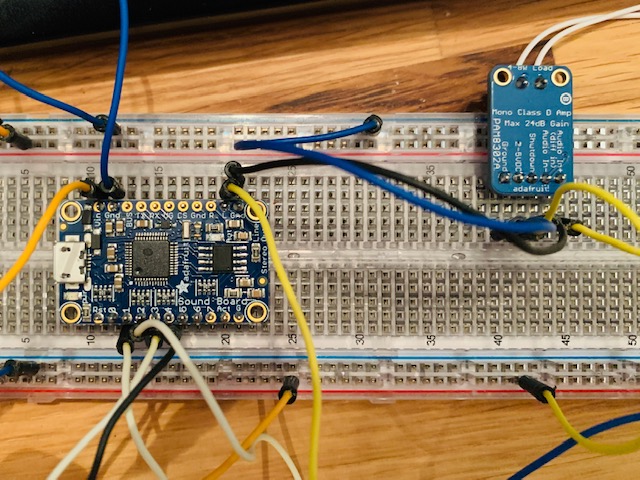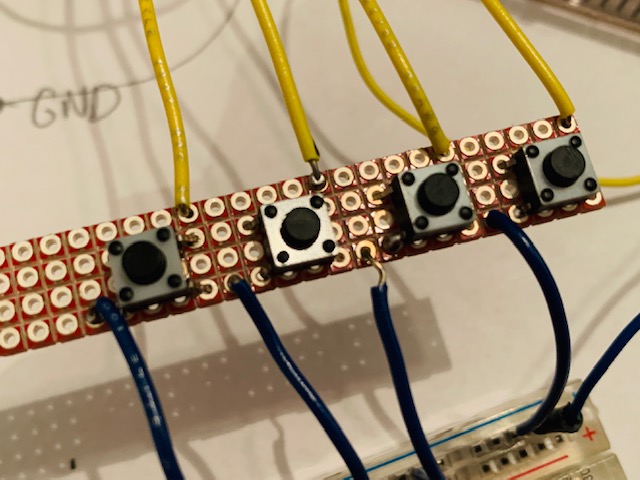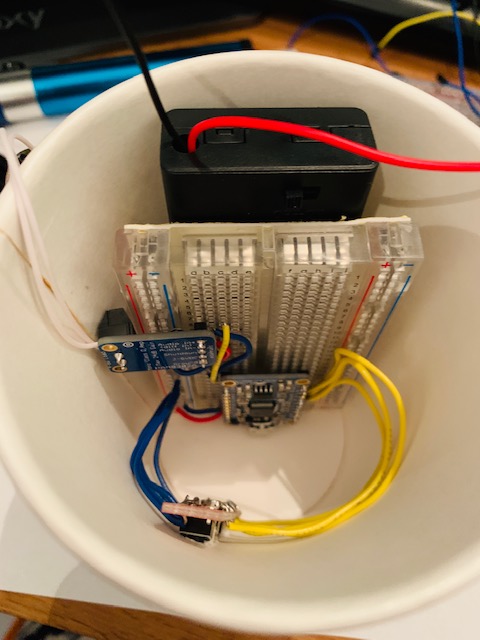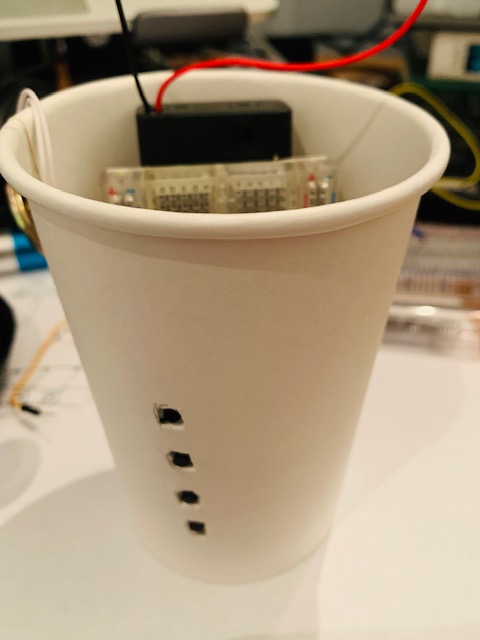The Best Part of Waking Up, is a Sound Board in Your Cup
A few years ago, while sitting in a conference room with colleagues, I told a joke. When the joke was about to land, I slapped my hands in quick succession on the table, and said TSSHH.
It was San Francisco office space, so the wall behind me may have been brick, although the lights weren‘t on me, nor was the room smoke filled. I immediately wished for a ”sound board,“ with a button to press to get a more realistic version of the rimshot I had replicated.
After a little research, I realized that to do what I want, it’d cost me a little bit of money, and not a ton of time. It was still too much commitment for me. I cast it off.
Probably a month or so later I thought about that project again, and had an epiphany! It‘d be much better if the sound board was hiding in plain site, like, say, within a coffee cup! Pretend like you’re taking a sip of coffee, and oh there it is, a wilhelm scream AAAAAAAAHHHHHHHHHH!!!!
Or, land a joke? BAH DUM TSSH!
Or, meeting too quiet? How about some crickets!?
Joke a little bit flat? Whomp, whomp, whomp.
It‘d probably look something like this. (This is a link to a YouTube video. But, because I refuse to subject my readers to explicit tracking, I have not embedded it on the page. Copy and paste the URL to avoid sending a Referer, or use an alternative YouTube viewer -- Ed)
—
On the Metal came out late last year in support of a new computer company. The podcast interviews people who get down and dirty with bits, either because they’re involved in making bits, or trying to waste not even one bit in providing more efficient abstractions over physical hardware.
Needless to say, I realized how much I‘ve neglected that side of computing things in my life. I don’t think about hardware anymore, don‘t think about cache lines, firmware, and rack designs that create the best opportunity for cooling. I haven’t had to since college. And, even then, it was one or two classes where some of the above topics had relevance.
I‘m probably not going to dramatically shift my career into hardware, or even into firmware and other super low level things. As a hobbiest, though, it might be possible to do a few things now and again. I seem to stumble upon this realization every couple of years, and as a result I’ve got a mostly neglected, disorganized parts bin, and a soldering iron.
In the bin, this time, I found a Hidiot, which I bought with the intention of soldering practice. It remains in an electrostatic bag with the hand written note thanking me and wishing me well.
Around that same time I purchased the Hidiot, I had ambitions to build a video game and hook it up to my TV. I got as far as a Sokoban game, playable with hard wired buttons, on an Arduino Uno, over the serial line, all on a breadboard. My intention was to bit-bang a video signal back to a TV and play it that way. But, of course, the TV aspect never happened. (Does my 4K TV even have video in? Probably, but ... I probably need an older monitor for my well being.--Ed)
My interest never seems to stick for some reason. Perhaps it‘s the lack of community I have nearby (my fault, no one elses), or this sense that there’s not enough time–not sure. But, either way, the ambition is often fleeting.
Did I have motivation for something, anything else in hardware that I could actually finish before losing interest?
I had a short work trip upcoming, with days of sitting in a conference room, maybe I should revisit the sound board coffee cup?
Seemed easy enough. Take an Adafruit sound board, solder on a small amp, hookup a speaker, wire up some batteries, some buttons, put it in a coffee cup, and wake up to a sound board in the morning.
—
Parts list:
- Adafruit Audio FX Mini Sound Board (2MB)
- Adafruit Mono 2.5W Class D Audio Amplifier
- Mini Metal Speaker w/ Wires - 8 ohm 0.5W
- Parts bin: Generic AAA battery pack, with switch.
- Parts bin: 4 6mm tactile button switches
- Parts bin: solid core wire
- Parts bin: breadboard
- Parts bin: Sparkfun Snappable Protoboard
The wiring was pretty straight forward, but this was my first time soldering on headers to little boards. It was late, I wasn‘t thinking straight and soldered the headers on the amp the wrong way, forcing some annoyances during the prototyping stage.


The button board was fun. I realized, at some point, that the quickest way to finish this was to do was to just use a smaller breadboard. That meant I didn’t need do anything fancy for the ground lines. There‘s more than enough connections on the bread board. (This felt like cheating, but, you can't argue with results--Ed)
The solid core wire used for soldering the button board turned out to be a great idea since it was able to provide structure when installed within the cup. The final result looks like this, seen here without the electrical tape holding everything in place, or the speaker installed underneath the black lid.

The buttons are positioned for your thumb to engage them discreetly. Pretend you’re drinking coffee, and no one is the wiser.

The four buttons, top to bottom:
- Crickets Chirping
- Wilhelm Scream
- Sad Trombone
- Rimshot
(If you missed the link to the video above, here it is again)
I brought it to our meetings, and it was a hit!
The cup was the butt of every joke for the first half of the first day, before I put it away for our out of office lunch. During the second day, it was noticably absent, with people pointing out places in which the coffee cup‘s capabilities would have been wildly appropriate. For the afternoon session, I brought it back out, especially as there were new folks joining us. They, too, seemed to appreciate the extra encouragement with every zinger!
All in all, this was a fun little project that taught me a few valuable lessons about soldering and breadboarding. I’ll take those with me to the next project, which hopefully won‘t be the butt of the joke.
—2020-02-10